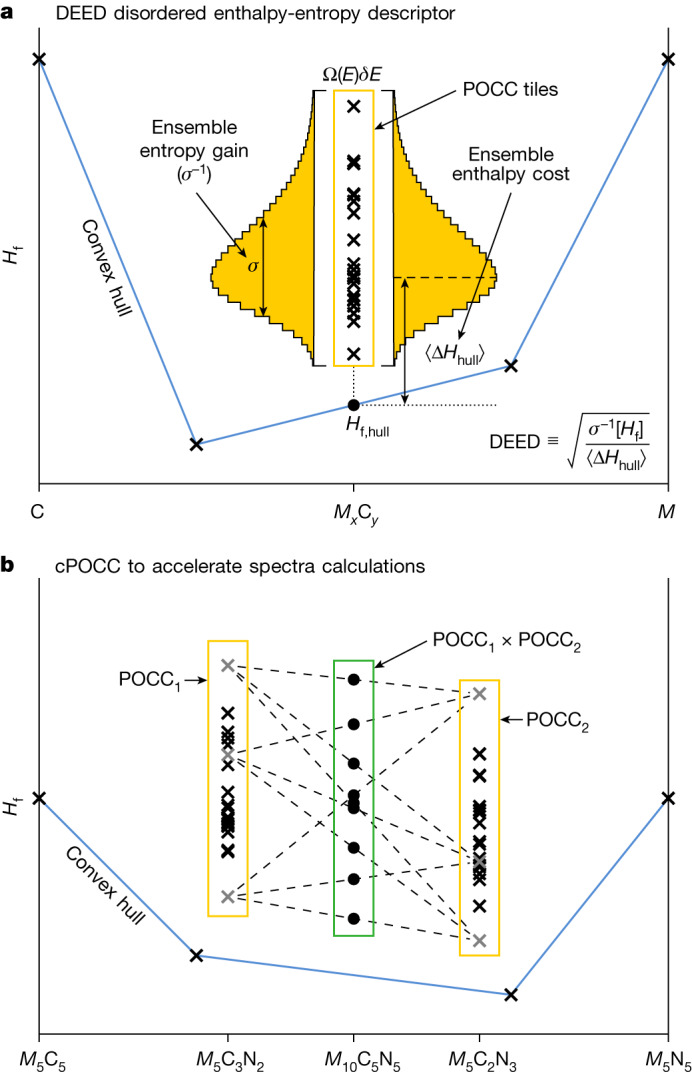Fig. 1. DEED for a disordered system.

a, DEED workflow. ⟨ΔHhull⟩ and σ−1 are calculated as the average distance of the POCC-tile energies to the convex hull and the spread (variance) of the POCC-tile energies, respectively. b, cPOCC workflow. The POCC expansion of a M10C5N5 rock salt composition would require 17.5 million 20-atom tiles. This is overcome by a partition into M5C2N3 and M5C3N2 subsystems, each giving 490 unique ten-atom tiles and the subsequent energy convolutions. This cPOCC algorithm and its benchmarks are described in the Methods section.
